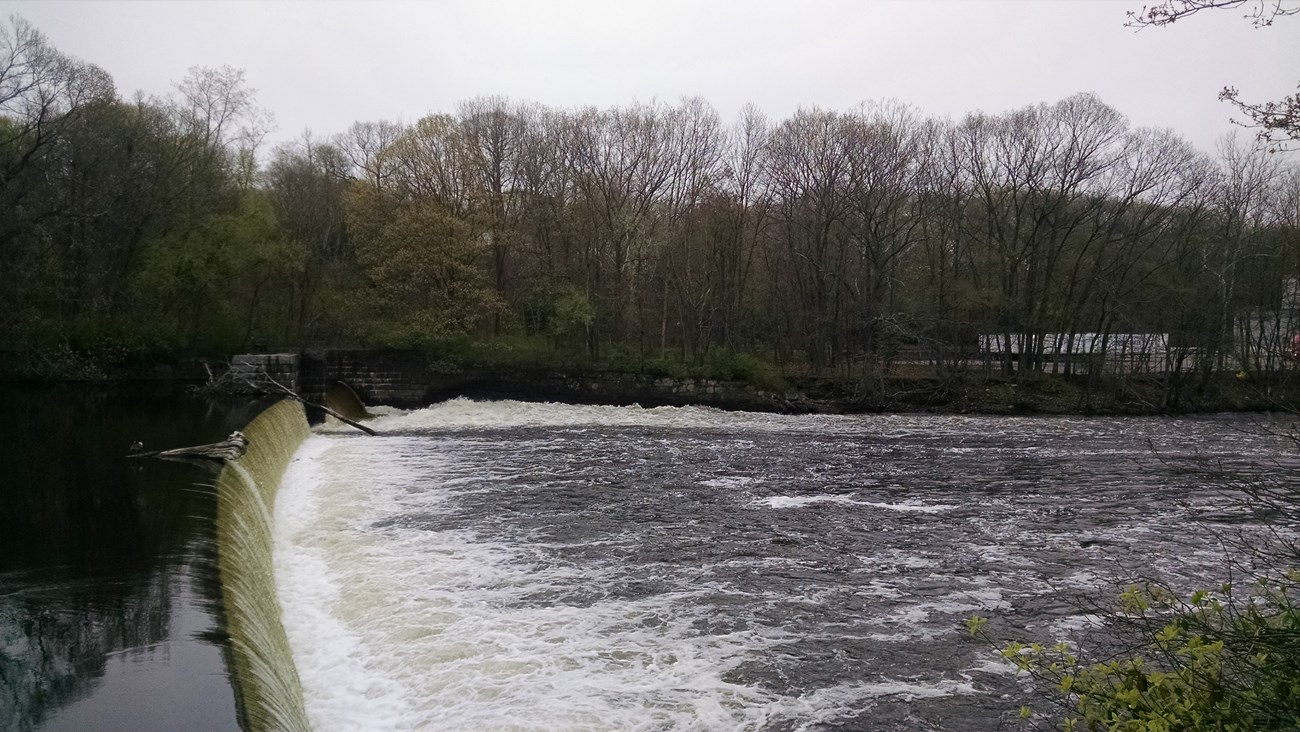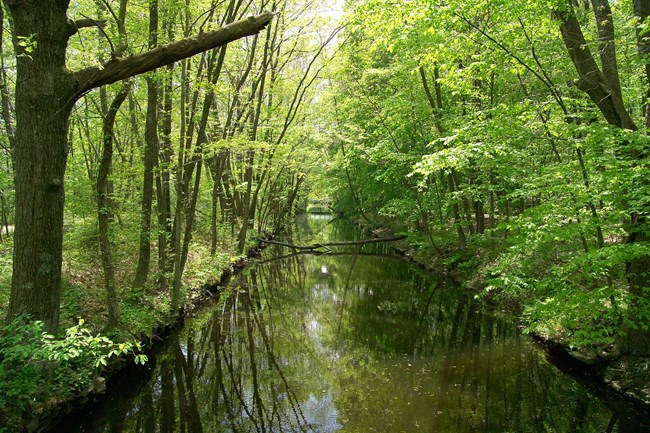

But these dams are not all bad. Behind the dams are mill ponds. A mill pond is a pool created to provide water for a mill. These bodies of water are also an ideal habitat for many fish, bird, reptile, amphibian, and mammal species. Another example of humans unknowingly creating a new habitat is the surviving sections of the Blackstone Canal. The Blackstone Canal in modern Lincoln, Rhode Island has a different negative effect. At Quinnville, the Blackstone Canal leaves the Blackstone River. About four miles south, it enters the Moshassuck River dumping water from the Blackstone. This never happened naturally because the two watersheds are separated from each other. They are now linked, meaning that some of the pollution from the Blackstone enters the Moshassuck. It also means the natural flow of one river is reduced while the other is increased.

People, Places and Stories
|
Last updated: May 25, 2025



